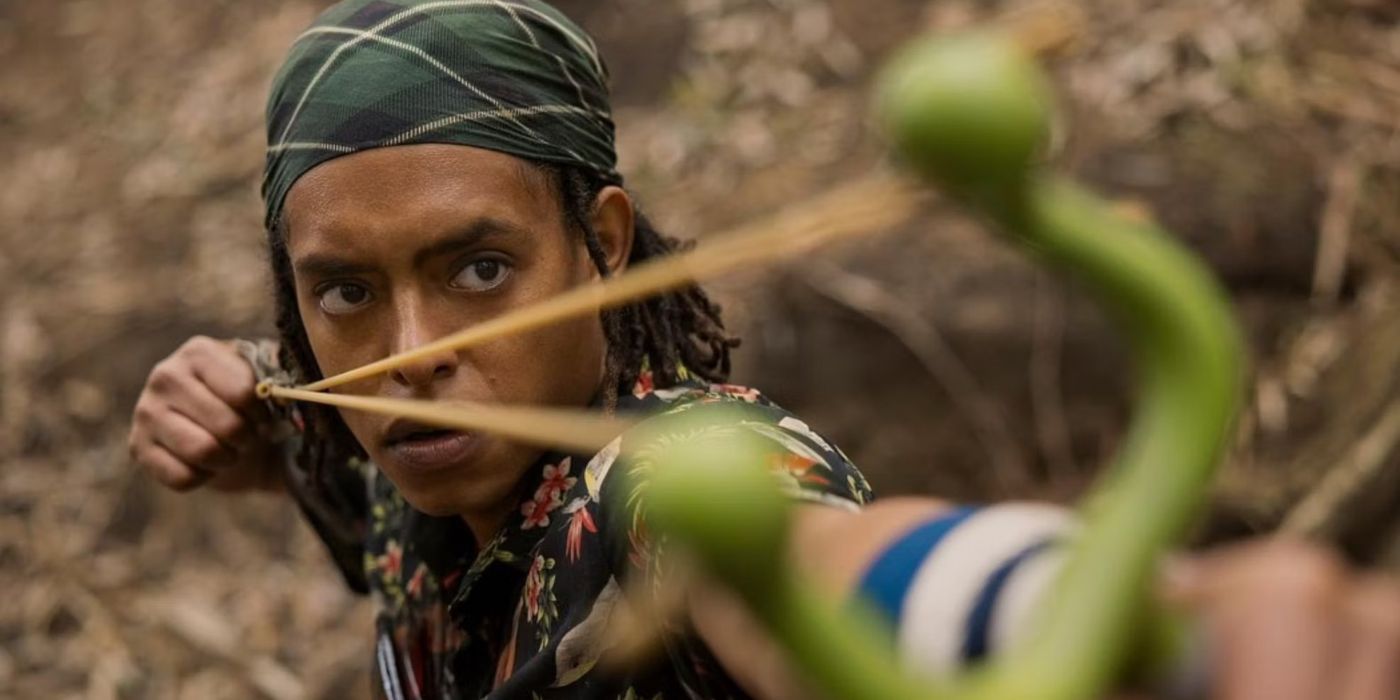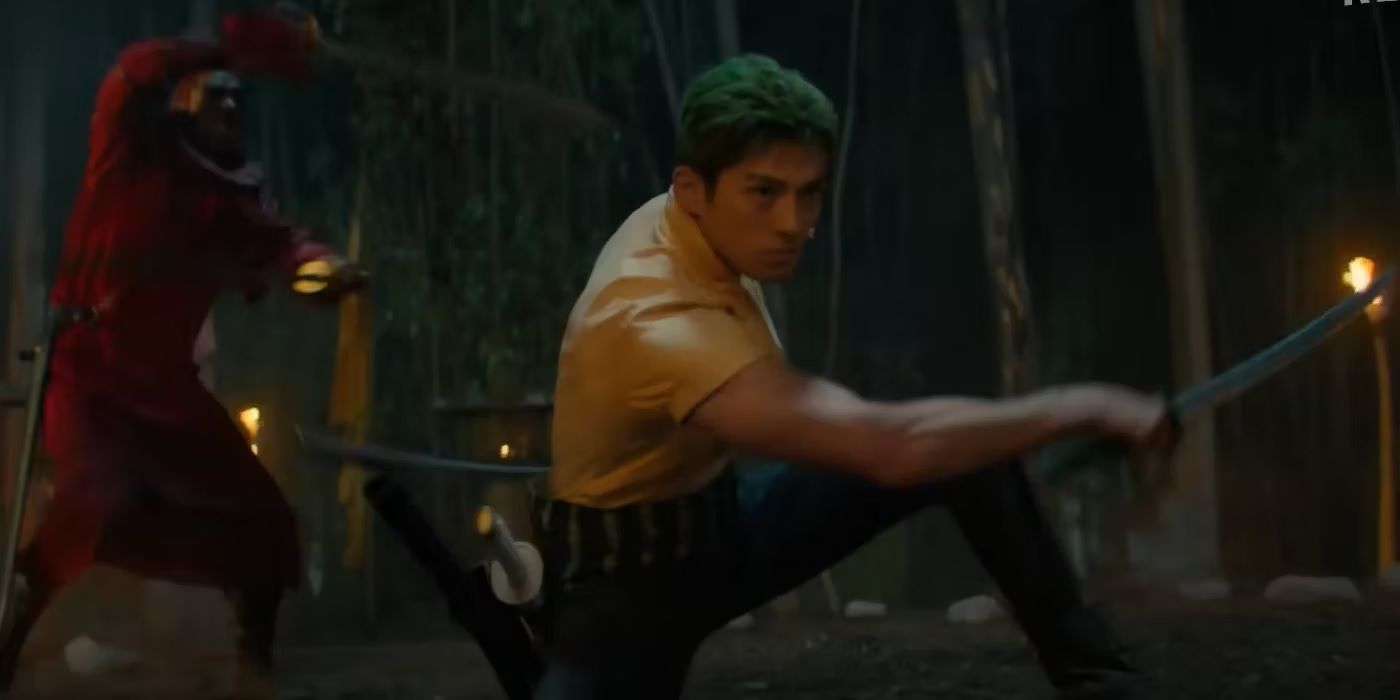In an interview with CBR, One Piece director Emma Sullivan shares how she delivered terror and raw emotion in the live-action Netflix series.
Much like the manga series created by Eiichiro Oda, the live-action One Piece series veers into several different genres. The third and fourth episodes of the show’s inaugural season, directed by Emma Sullivan, put Monkey D. Luffy and his friends on a scarier adventure as they assemble their pirate crew to locate the series’ eponymous treasure. This story also puts Usopp into the spotlight while revealing some of the history behind the team’s expert swordsman Zoro, as they struggle to survive encounters with fearsome foes.
In an exclusive interview with CBR, One Piece director Emma Sullivan explained how she and the creative team leaned into horror for her episodes, praised the cast for delving deeper into their characters, and revealed behind-the-scenes secrets in bringing this story to life.

CBR: Usopp really is the heart of the two episodes you direct. How was it working with Jacob Romero Gibson to chart his arc?
Emma Sullivan: Jacob probably has a heart as big as Usopp, actually. He’s really creative, he’s a musician, [and] he’s brave. When he comes on set, he has ideas. He’s never afraid to try something. You can be like, “Try jumping onto that chair and then that bed over there,” and he’ll be like, “Yeah, alright! That sounds great. Let’s do it!”
He’s a great actor, and great actors love to show heart and emotion. It was exciting for us because it was Usopp’s intro, so we wanted to make sure that we made the most of him, and he’s lovely.
If Usopp is the open heart, Zoro is usually closed off, though we get to learn more about him in these episodes. How was it working with Mackenyu to find all that nuance in such a stoic character?
Fantastic because, with Zoro, it’s just these tiny, little things, and it’s actually funny. I love Zoro. Mackenyu can fight that well. He’s incredible. He can do all the katana action. He loves doing it, and it’s just a joy watching him do that, but he also gets the humor. I love all those little sides of Zoro, the fact that he gets lost even though he’s a badass. I love the drinking and all those wry looks, which I think balance the tone, and Mackenyu is another lovely young man.
The nice thing is we have this backstory, which I think adds to the character. You realize why he’s driven and why he wants to be the greatest swordsman in the world. There’s something tragic in his background that’s driving him and maybe why he’s more stoic.
The two episodes you directed this season are as close as One Piece gets to gothic horror. How was it leaning into that, building tension and atmosphere with this story?
It’s just great. I love doing all that. There are parameters of the genre — anticipation, how you move the camera as things creep in, [and] how you do the shocks and reveals. That’s just joyful. [laughs] We had this great crew, so we had the ability to do anything we wanted with the cameras. It was a lovely challenge. I like genre and trying to apply those rules to things.

While you’ve got gothic horror, you also have sequences that feel like they’re right out of Akira Kurosawa movies with the Zoro scenes. How was it working with Nicole Whitaker as the cinematographer?
Firstly, thanks for referencing Kurosawa. [laughs] Michael Wood was my D.P. It wasn’t Nicole. Nicole set up the show with [director and executive producer] Marc Jobst. With Michael, we have a prep period, and I do quite a bit of storyboarding myself. I really like drawing, which is another reason I love Oda’s manga. I can relate to somebody who draws things like that. You’re trying to get the way he tells the story of the manga through the cameras.
You go through the sets, think what you can do here, collab as much as you can, and sometimes when you get on set, it changes a little bit. Somebody does something better, or somebody has a better idea. I’m happy to be collaborative. Filmmaking is a very collaborative art form. There are hundreds of us on set, and everybody’s very good at what they do. If somebody’s got a better idea, I’ll take it.
In looking at Eiichiro Oda’s manga, was there an energy or any sensibilities you wanted to be sure to emphasize in live-action?
There’s a swagger sometimes, particularly with the Black Hat Pirates and Pizarro, who’s got this real stylish energy to him. With the manga, I’m quite jealous that they can change the frame sizes, and there was a point where I was like, “Can we do stuff with the frame? Can we go in and out with it?” Taking that from the manga is important.
You’ve got a cast of characters with unique abilities, like Usopp’s marksmanship, Zoro’s swordsmanship, and Luffy’s stretchy powers. How did you want to capture and showcase that in these action sequences?
I’m a fan of martial arts, and I used to do it when I was a kid; not anymore, I’m rubbish. I like to see the whole body and the actual skills that someone like Mackenyu has. We have a few tricks up our sleeve and an incredible stunt crew, but you really want to believe it and get the best frame of it that you can get. Usopp is easier, but when it comes to Zoro’s fights, those are really big productions.
They’re a lot of work. There’s a lot of pre-visualization happening. There are a lot of rehearsals happening, and you want to make sure that you get that incredible heightened ability on-screen. There’s an amazing katana specialist working with us called Koji Kawamoto, and he did all the katana action. Watching him is like watching fireworks. He’s just incredible. You have to get that on camera.

How was it working with the art department and set designers to make sure the environments captured all the trappings of that gothic atmosphere?
It’s a constant conversation, and we had an incredible set designer Richard Brigland, who did it. Trying to describe what it’s like walking on those sets, it’s like when you were a kid, had action figures, and went into the world doing a fight. Walking onto those sets is like that. For example, in Kaya’s bedroom, Richard had got our amazing art department to draw pictures. There are pictures of Usopp on the wall, and there’s a painting of Mary. They’re real paintings and real drawings and Jacob as Usopp. If you open the drawers in the room, there’s stuff in the drawers. You do feel the level of detail on these shows. It’s amazing!
Let’s talk about Nami. She’s on the defensive but still ready to fight and never a victim. How was it working with Emily Rudd on that arc in this horror-driven story?
She’s a lovely actress to work with, obviously. It was nice because she has this quite emotional scene that’s in my episode. That was enjoyable to relax and focus on an emotional, quiet scene. But I also put Emily in a lot of cupboards. [laughs] Bless her. I’d be like, “These are amazing sets, really huge, but could you go and sit in that little box, and we’ll stick a camera right in your face.” She was always happy to do it, and she’s a badass. She can really do all that stunt stuff.
Is using those tight closeups to heighten tension and claustrophobia?
Yeah, and I think it’s also because the manga often feels quite low and wide. We had these incredible wide lenses that were almost like fisheyes. When you’ve got a face like Emily’s, everything is there, and she nails it because everything is happening. The camera sees you thinking, and Emily gives you everything. It’s really fun working with her, but then she’s gone because she does everything so quickly.
ONE PIECE is a live-action pirate adventure created in partnership with Shueisha and produced by Tomorrow Studios and Netflix. Matt Owens and Steven Maeda are writers, executive producers, and showrunners. Eiichiro Oda, Marty Adelstein, and Becky Clements also executive produce. One Piece premieres Aug. 31 on Netflix.
Src: cbr.com